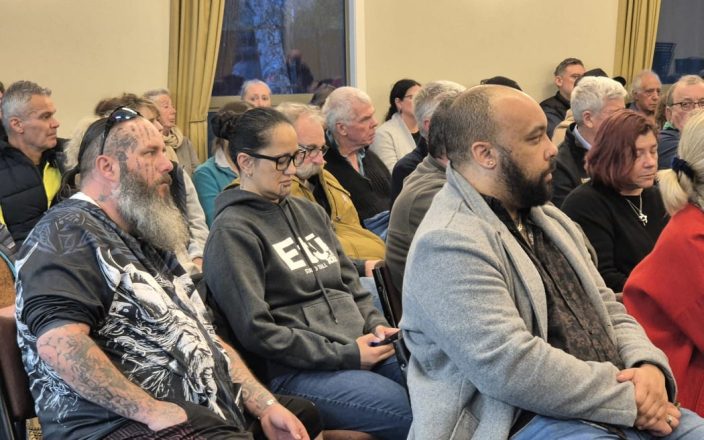Một cuộc họp công khai đã được tổ chức vào ngày 27 tháng 8 năm 2024, để thảo luận về khả năng đóng cửa các nhà máy Winstone Pulp International ở trung tâm Đảo Bắc, có thể dẫn đến mất 230 việc làm. Nhiều người trong cộng đồng bày tỏ lo ngại về tác động của việc đóng cửa này. Cuộc họp tại hội trường nhà thờ của Raetihi đã đầy ắp, với người dân địa phương, gia đình và thậm chí cả trẻ em có mặt.
Liz Brooker, người tổ chức cuộc họp, nhấn mạnh rằng vấn đề này ảnh hưởng đến toàn bộ khu vực, không chỉ các công việc. Nhân viên và gia đình của họ chia sẻ những lo lắng của họ, với một số người rơi nước mắt. Aaron McCann, người đã làm việc tại nhà máy trong 29 năm, đã mô tả gia đình ông đã kết nối với nhà máy trong nhiều thế hệ như thế nào. Anh ta buồn vì con trai mình có thể phải rời đi làm ở Úc nếu nhà máy đóng cửa.
Duane Dixon, một công nhân lâu năm khác, nói rằng anh muốn ở lại quê nhà, nhưng anh có thể phải chuyển đến để nuôi gia đình. Nhiều công nhân, như thợ điện Daniel Abernathy, lo lắng về tương lai của họ và cách họ sẽ tìm được việc làm nếu nhà máy đóng cửa.
Winstone Pulp International đang phải đối mặt với giá điện cao, khiến họ phải đóng cửa. Giám đốc tài chính của họ, Glenn Whiting, bày tỏ lòng biết ơn vì sự hỗ trợ của cộng đồng nhưng thừa nhận tình hình đầy thách thức.
Thị trưởng Raetihi Weston Kirton hứa sẽ đấu tranh cho tương lai của nhà máy, đề nghị chính phủ nên cung cấp hỗ trợ tài chính, tương tự như trợ cấp cho các công ty khác. Tuy nhiên, Nghị sĩ Quốc gia Suze Redmayne đã không cam kết thực hiện bất kỳ lời hứa nào về hỗ trợ, nói rằng họ đang khuyến khích các công ty điện lực tìm ra giải pháp của họ.
Thời gian sắp hết, khi các cuộc tham vấn với công nhân kết thúc vào thứ Hai và các nhà máy có thể đóng cửa vào đầu tháng 10 nếu không có hành động nào được thực hiện.




























































